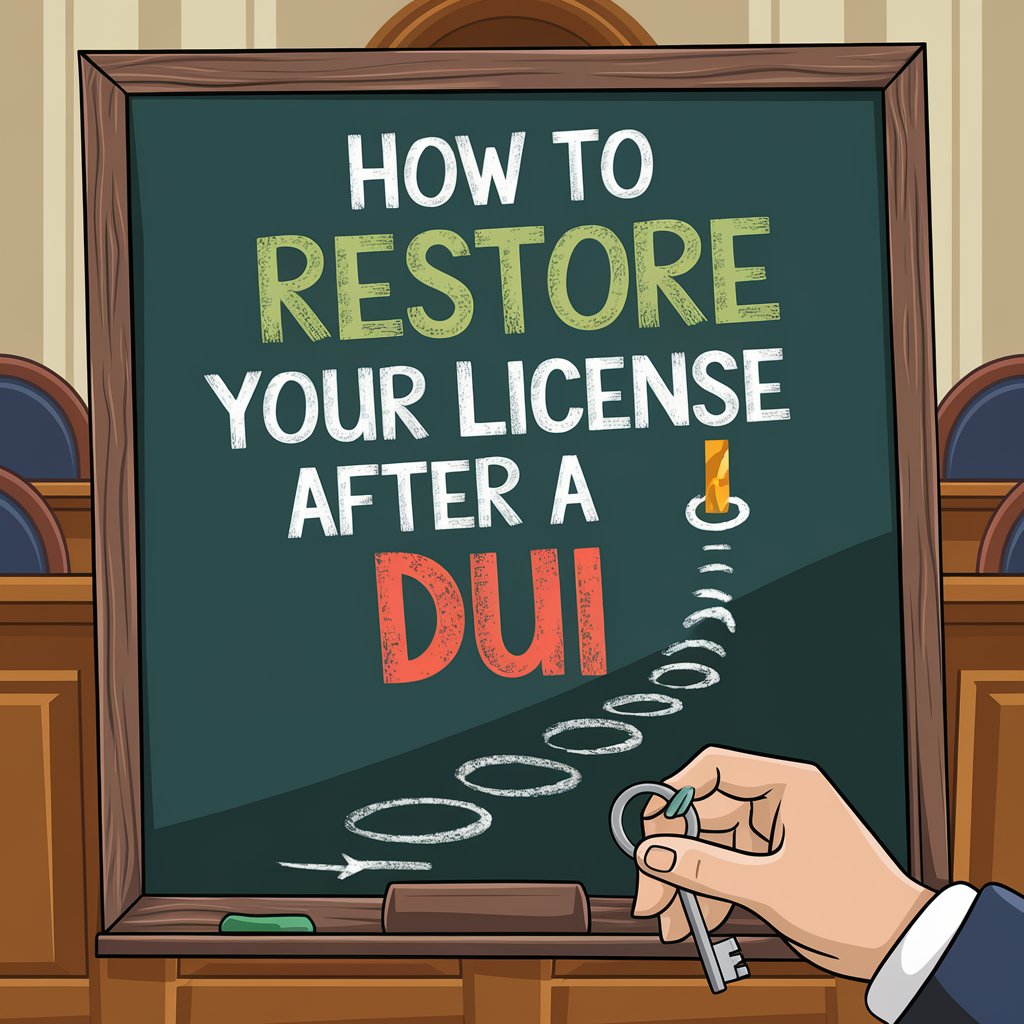Tips for Getting Your License Back After a DUI/DWI
Losing your driving privileges after a DUI/DWI can significantly impact your daily life – that much is quite obvious – but there are steps you can take to restore your license. How you approach these steps will largely determine if you’re successful or not.
Let’s take a look at what you need to know and do:
- Understand State-Specific Requirements
Each state has its own set of rules and regulations when it comes to DUI/DWI license reinstatement, so understanding your state’s specific requirements is essential. Some states have mandatory waiting periods before you’re eligible to apply for reinstatement, while others might require that you meet certain criteria beforehand, such as completing alcohol education classes or rehabilitation programs.
Most states outline these steps on their Department of Motor Vehicles (DMV) website, where you can typically find a breakdown of eligibility requirements, reinstatement fees, and any additional documentation needed. Make sure to get familiar with this information upfront to avoid any unexpected roadblocks later on.
- Hire a Lawyer
Navigating the complexities of DUI/DWI reinstatement procedures can be overwhelming. A DUI attorney who specializes in these cases is invaluable. They’ll help you understand what to expect and how to navigate each step. They can also assist with paperwork, represent you at DMV hearings, and advocate for any conditions that may work in your favor.
“Moreover, a lawyer can help you identify any potential issues in your case that might affect your reinstatement, such as previous violations or complexities in state laws,” state the experts at SBBL Law. “With their expertise, you can make sure all your bases are covered and that your case is presented as effectively as possible.”
- Complete Required Programs and Assessments
In many cases, DUI or DWI convictions come with mandatory educational or treatment programs. These can range from alcohol education courses to more in-depth rehabilitation or therapy programs, depending on the severity of the offense and your history. Completing these programs demonstrates to the DMV and any associated court that you are committed to changing behaviors and taking the offense seriously.
Once completed, most programs provide you with a certificate of completion. This document is vital, as you’ll need to submit it to the DMV or court as part of your license reinstatement process. Ensuring all your paperwork is in order and accessible is an easy way to avoid delays.
- Prepare for the DMV Hearing
In most states, you’ll need to attend a hearing with the DMV to discuss your eligibility for license reinstatement. This is your chance to demonstrate that you’re a responsible driver committed to making positive changes. Preparation is key here, so consider going over your approach and presentation carefully. Here are a few ways to prepare:
- Document Your Progress: Show that you’ve taken steps toward improvement, such as completing a treatment program or engaging in volunteer work. Evidence that shows you’re committed to change can help reinforce your case.
- Gather Character References: If possible, bring letters from employers, mentors, or other credible sources who can speak to your responsibility and progress. Personal testimonials can help sway the hearing officers’ opinion in your favor.
- Be Honest and Humble: You’ll need to acknowledge the severity of your offense and your understanding of its consequences. Demonstrating sincerity and remorse can positively impact the outcome.
- Explore the Possibility of a Conditional or Hardship License
In some states, you may be eligible for a conditional or hardship license before your full driving privileges are reinstated. A conditional license allows you to drive under certain restrictions, such as only being allowed to drive to work, school, or medical appointments. This can be a helpful interim solution if you have commitments that require you to drive.
To apply for a conditional license, you’ll likely have to demonstrate a clear need and provide supporting documents, such as a letter from your employer or school. Keep in mind that these licenses come with their own set of requirements, such as installing an ignition interlock device (IID), which requires a breathalyzer test before the engine will start.
- Install an Ignition Interlock Device (IID)
Many states mandate the installation of an IID as a condition of reinstating driving privileges, especially for repeat offenders or high blood alcohol content (BAC) cases. This device prevents the vehicle from starting if alcohol is detected on your breath and acts as a safeguard to prevent further DUIs.
If you’re required to install an IID, you’ll typically need to have it installed by a certified provider. Make sure you understand the requirements, including how long you’re required to keep the IID and any associated costs. Maintaining compliance with the IID requirement is essential to avoid any additional penalties or delays in your reinstatement process.
- Pay Reinstatement Fees
Finally, once you’ve completed the necessary programs, attended your hearing, and met any other conditions, you’ll need to submit your reinstatement application along with any fees and required documentation. The reinstatement fees can vary widely depending on your state and the specifics of your case. Be sure to check with the DMV to confirm all costs and gather all the required documentation before submission.
Delays are often caused by missing paperwork or unpaid fees, so double-check that you have everything in order before applying. Once submitted, you may need to wait for the DMV’s final approval, but having the correct documentation on hand can help ensure a smoother process.
Get Your License Back
Your license is a lot like a bottle of water or a jacket in the winter. You don’t realize just how much you need it until it’s gone. And if you’re dealing with the consequences of DUI, you certainly face an uphill battle in having access to your driver’s license.
However, as this article shows, there are steps you can take toward reinstatement. Work with your attorney to explore all opportunities and options available to you!






